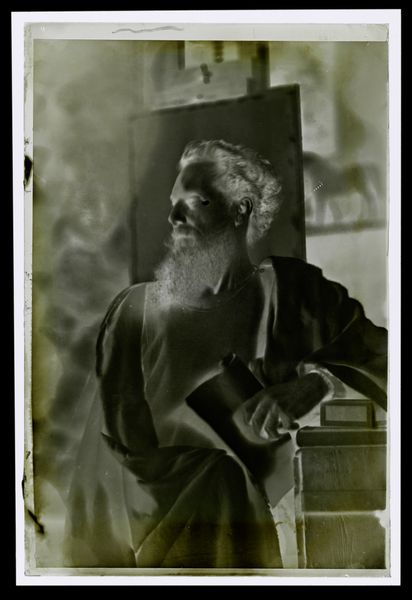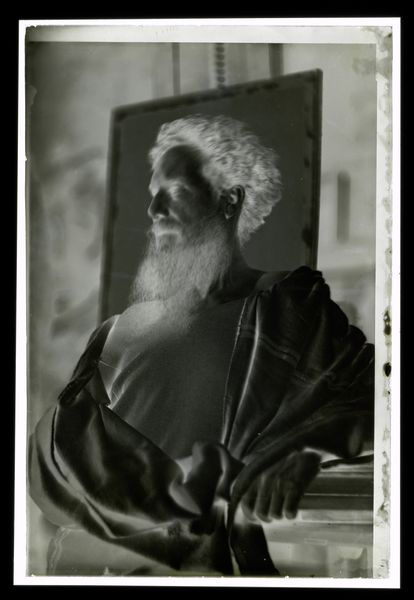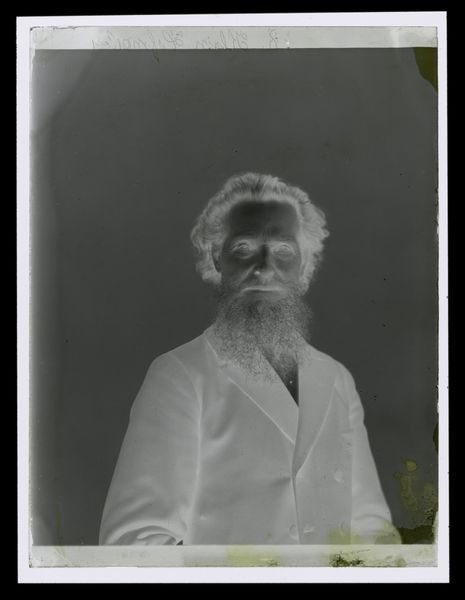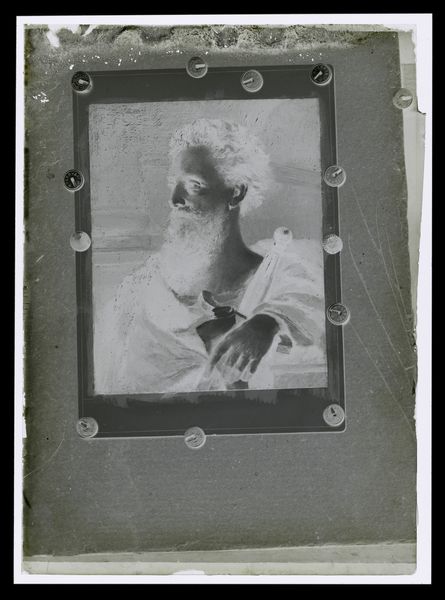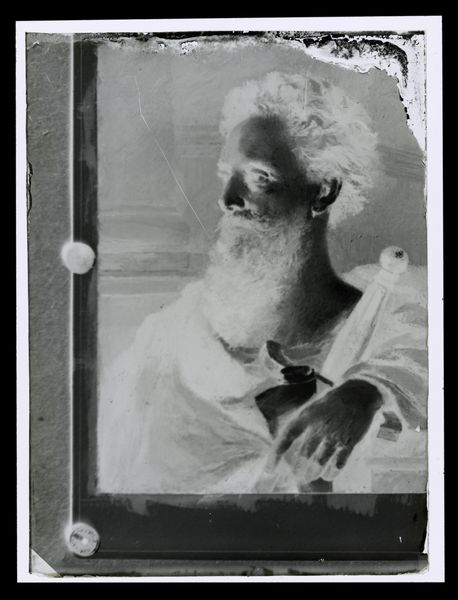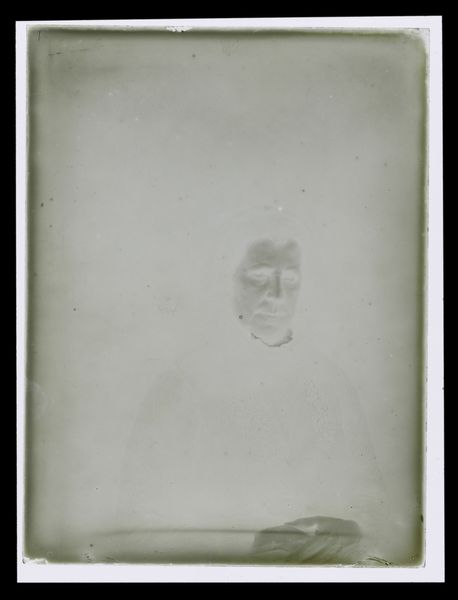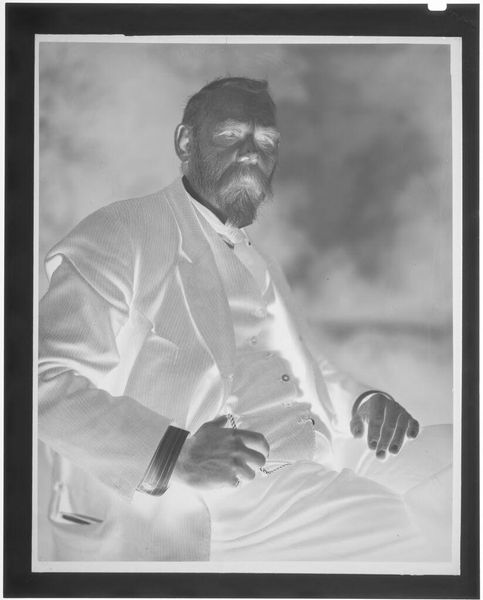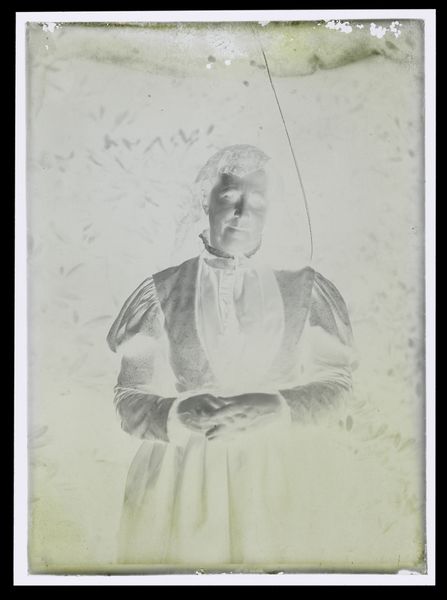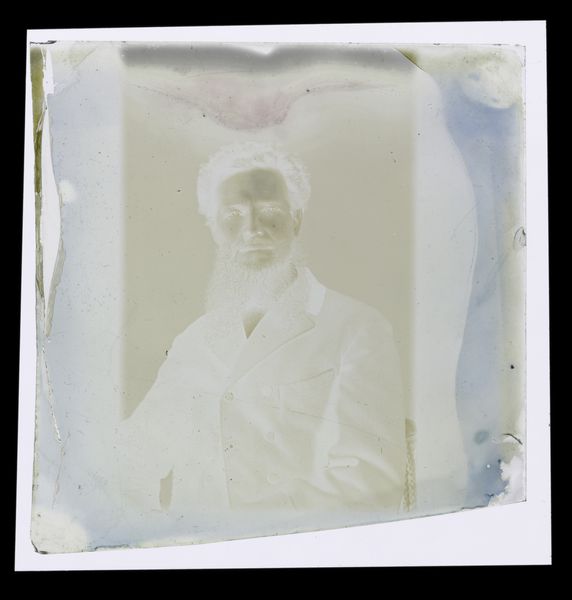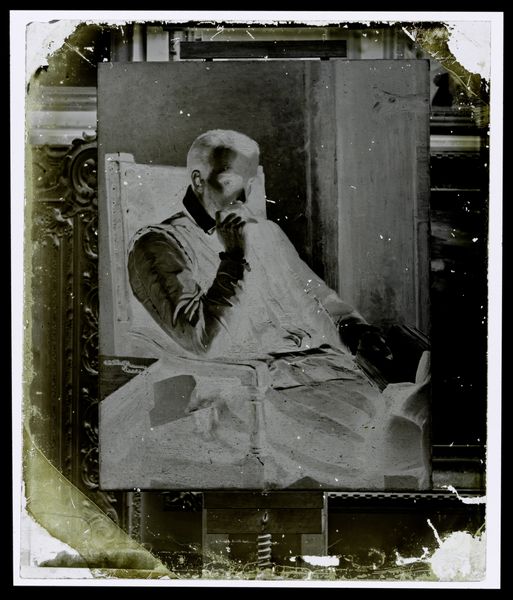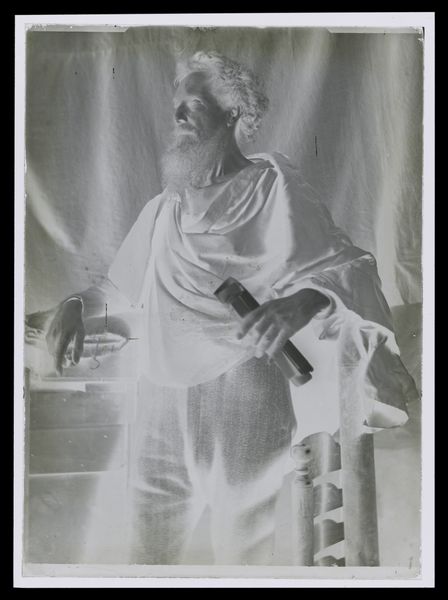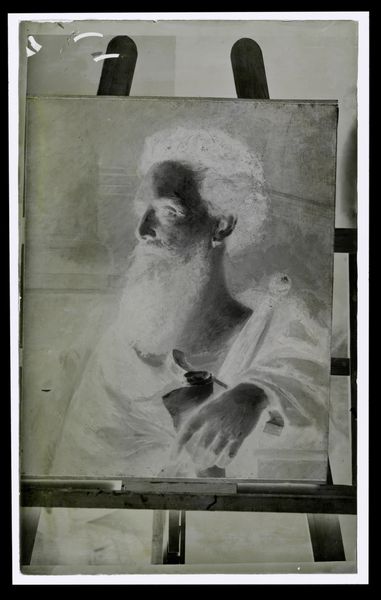
Dimensions: height 120 mm, width 88 mm
Copyright: Rijks Museum: Open Domain
Curator: The image we are viewing, "Portret van een man, mogelijk een zelfportret," is a gelatin-silver print likely created between 1865 and 1900. Editor: It has a ghostly quality to it. The tones are inverted, and there's a soft focus that evokes a strong feeling of romanticism, it really leans into drama, I can immediately perceive his solemn mood. Curator: Absolutely. The Romantic era prized the individual, and portraits like these were charged with notions of authenticity, as they provided insight into the sitter's inner state. Editor: Tell me about it; you get a very melancholic impression just by observing how this figure, frozen in a brief moment in time, transmits such vulnerability. I'd point out how his dark attire provides high contrast. Also, it might sound odd, but the small artifact spots across the medium only add up to the emotional character of the artwork, becoming an element of disruption to the overall composition. Curator: Consider the power of self-representation through photography in this era. A "photographic consciousness" emerged as people started using photography to form and negotiate ideas about themselves, their families, and their communities. I agree about the Romantic feeling in the shot, it looks deliberately pictorial, the soft light gives the face such sculptural shape! It has all the cultural marks of an epoch: it carries symbols of cultural memory that keep being recreated in other works. Editor: The angle emphasizes this. He’s presented slightly in profile, not a direct engagement, that creates a degree of removal, contemplation, and inward reflection, the light emphasizes key aspects such as the face and his white shirt. Curator: This photograph is more than a historical document; it's a complex artifact where romantic and introspective cultural values come alive. Editor: Exactly. And its visual imperfections paradoxically reinforce its artistic statement. Its artistic imperfection adds beauty to this composition, just as life’s beauty stems from acknowledging and even celebrating its imperfection and incompleteness.
Comments
No comments
Be the first to comment and join the conversation on the ultimate creative platform.
